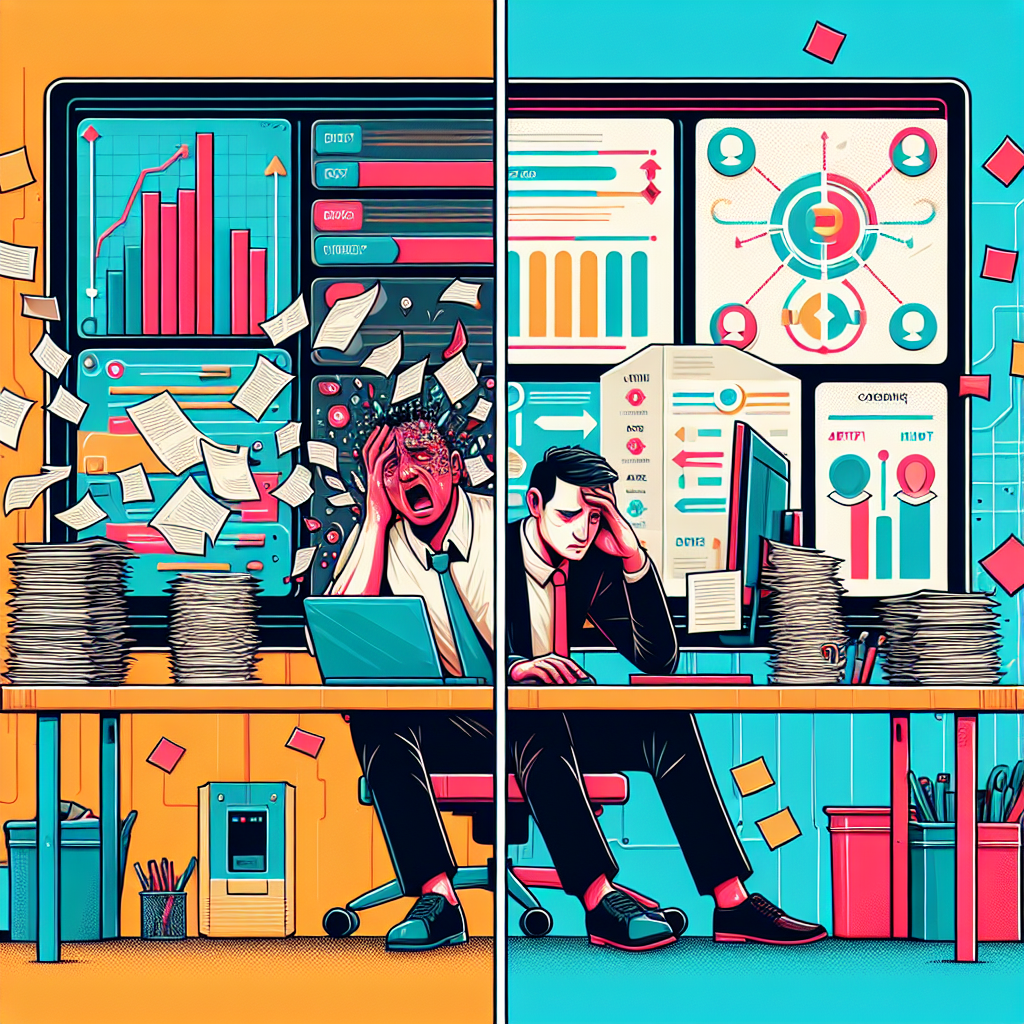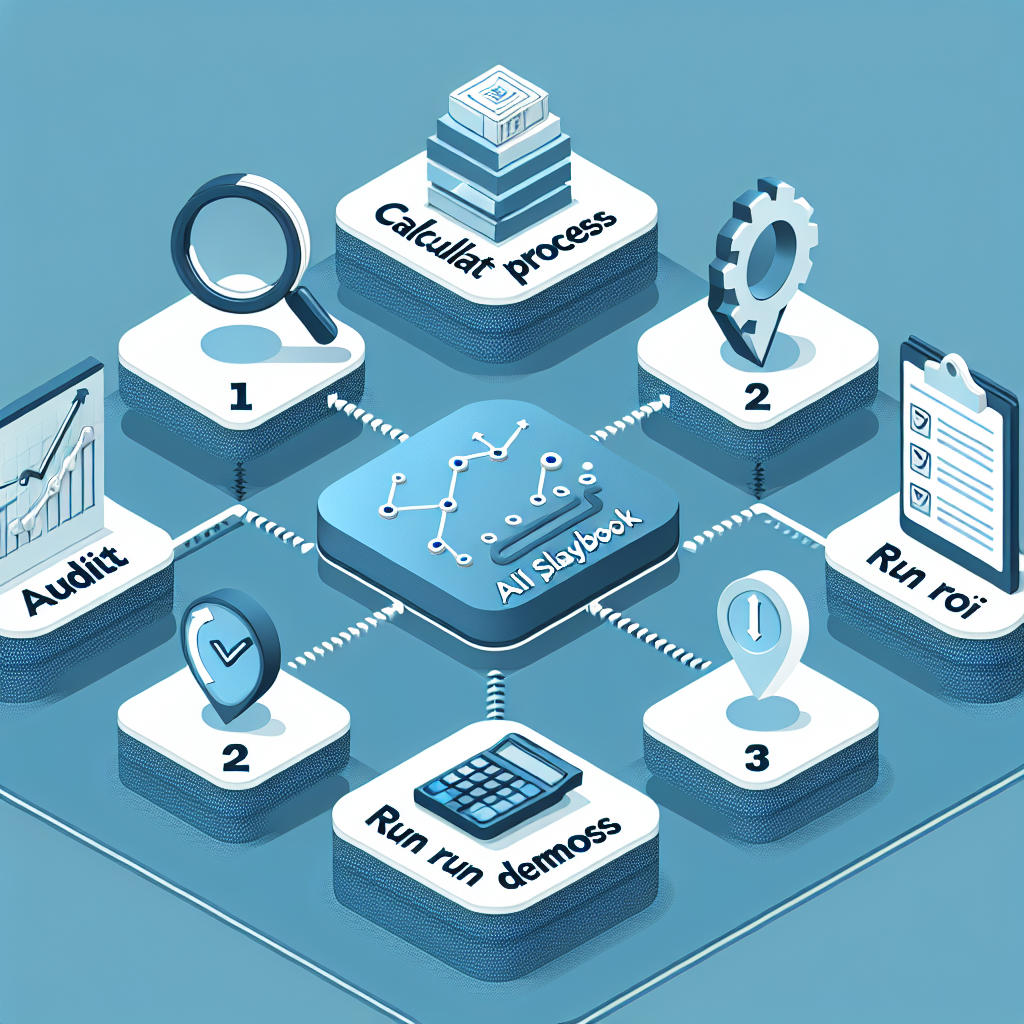Is your team drowning in a sea of resumes? Are your best recruiters spending more time on administrative tasks than on building relationships and closing placements? If you’re still relying on spreadsheets, manual processes, or an outdated Applicant Tracking System (ATS), you’re not just falling behind—you’re actively losing money, candidates, and your competitive edge.
The world of staffing has been transformed by artificial intelligence, but the market for AI recruiting software is a confusing maze of buzzwords, vague promises, and hidden costs. This is not another generic “Top 10” list that leaves you more overwhelmed than when you started.
This is your strategic playbook.
Inside this guide, you’ll find a clear, actionable framework designed specifically for staffing agency owners and managers. We will walk you through diagnosing your current inefficiencies, understanding the core AI technologies that actually drive productivity, and conducting a deep-dive competitor analysis of the top platforms. By the end, you’ll have the tools and confidence to select, justify, and master the right AI recruiting software for your agency’s growth.
- The High Cost of ‘Good Enough’: Why Your Staffing Agency Can’t Afford Outdated Recruiting Software
- The AI Revolution in Recruiting: Core Technologies That Drive Productivity
- ATS Competitor Analysis: The Top AI Platforms for Staffing Agencies in 2025
- Your AI ATS Playbook: A Step-by-Step Guide to Making the Right Choice
- From Inefficiency to Impact: Your Next Move
- References
The High Cost of ‘Good Enough’: Why Your Staffing Agency Can’t Afford Outdated Recruiting Software
The phrase “If it ain’t broke, don’t fix it” is a dangerous mantra in the modern staffing industry. Your current system might feel “good enough,” but the hidden costs of inefficiency are silently eroding your profitability. Relying on outdated recruiting software or manual recruiting tasks is no longer a viable strategy; it’s a liability.

Imagine a typical day for one of your recruiters. They start by manually sifting through hundreds of applications, many of which are unqualified. They spend hours cross-referencing candidate skills against job requirements in a clunky database. Then comes the endless back-and-forth of scheduling interviews, followed by manually updating candidate statuses. This isn’t recruiting; it’s administration. Research from Indeed suggests that these manual tasks can consume up to 80% of a recruiter’s time.[1]
This isn’t just inefficient; it’s a bottleneck that directly impacts your bottom line. A landmark survey by the Society for Human Resource Management (SHRM) found that among organizations using AI in their hiring process, 78% reported saving time and increasing efficiency, 59% reduced their time-to-fill, and 58% identified better-quality candidates.[2] By sticking with an outdated system, you are leaving this immense value on the table.
5 Signs Your Applicant Tracking System is Obsolete
How do you know if your current system is a trusted tool or a technological anchor? Here is a checklist to help you diagnose the health of your recruiting software.
- No Intelligent Candidate Matching: Your system relies solely on exact keyword searches. If a job description asks for “project management” and a great resume says “led cross-functional initiatives,” your ATS misses it completely. Modern systems use AI to understand context, skills, and experience semantically.
- A Clunky, Frustrating User Interface (UI): Your recruiters need extensive training to perform basic tasks, and the system is slow and difficult to navigate. This not only kills productivity but also leads to frustrated employees and poor data entry.
- Lack of Automated Workflows: Can your system automatically send an acknowledgement email when a candidate applies? Can it trigger a follow-up task for a recruiter after a phone screen? If every step requires a manual click, your process is fundamentally broken.
- Limited or Non-Existent Integrations: A modern ATS should be the central hub of your tech stack, seamlessly integrating with your email, calendar, VMS portals, and communication tools. If your system operates in a silo, you’re wasting countless hours on duplicate data entry.
- Potential Security and Compliance Risks: Older, unsupported software often lacks the security patches needed to protect sensitive candidate data. Furthermore, it may not have the features required to comply with modern data privacy regulations like GDPR and CCPA, exposing your agency to significant legal and financial risk.
The Cascade Effect of Inefficient Sourcing
The problems with outdated software extend far beyond internal frustration; they cripple your ability to find top talent. In today’s market, the best candidates are often passive, meaning they aren’t actively applying for jobs. In fact, it’s estimated that only 30% of the workforce is actively looking for a new opportunity at any given time. Your old system, which primarily manages inbound applicants, is completely blind to the other 70%.
This is where proactive sourcing becomes critical. Research from Lever highlights a powerful truth: sourced candidates are more than two times as efficient to hire as candidates who apply.[3] Yet, without the right tools, sourcing is an incredibly time-consuming manual process. Your recruiters are left to hunt through LinkedIn, job boards, and professional networks with no way to centralize, track, or intelligently engage with the talent they find. This inefficient candidate sourcing leads to weaker pipelines, slower placements, and missed revenue opportunities.
The AI Revolution in Recruiting: Core Technologies That Drive Productivity
“Artificial Intelligence” can feel like an intimidating buzzword, but in recruiting, its application is practical and transformative. AI-powered tools are designed to automate the repetitive, low-value tasks that consume your team’s day, freeing them to focus on the human elements of recruiting: building relationships, advising clients, and closing candidates.
As a report from Harvard Business Review aptly puts it, AI automates the most time-consuming parts of the hiring funnel, transforming the recruiter’s role from “administrative to advisory”.[4] These technologies aren’t here to replace recruiters; they’re here to empower them. For a broader look at how these trends are impacting the workforce, the World Economic Forum’s Future of Jobs Report provides valuable context.
Let’s break down the three core AI technologies that are reshaping the staffing industry.

Beyond Keywords: How Automated Candidate Matching Works
For years, an ATS was little more than a digital filing cabinet with a simple keyword search. This led to countless missed opportunities. Modern AI has changed the game with semantic search and automated candidate matching.
Think of it like Netflix. Netflix doesn’t just recommend movies with the word “action” in the title; it analyzes your viewing history, the genres you like, the actors you follow, and the viewing habits of people with similar tastes to make intelligent suggestions.
Similarly, AI-powered matching goes beyond keywords. It understands context, synonyms, and related skills. It can recognize that a “software engineer” is similar to a “full-stack developer” and that “P&L responsibility” is a key indicator of financial management experience. The system reads a job description and a resume like a human would, scoring and ranking candidates based on a holistic understanding of their qualifications. This is the technology used by industry leaders like Bullhorn, which leverages powerful AI from partners like Textkernel for its semantic search capabilities.[5]
Of course, with any algorithm, there are ethical considerations. It’s crucial to address the potential for algorithmic bias. Reputable AI ATS vendors are actively working to mitigate this by designing systems that focus on skills and experience, helping to reduce the impact of unconscious human bias in the initial screening phase. For agencies concerned with compliance, the EEOC Guidance on AI and Algorithmic Fairness is an essential resource.
Sourcing on Autopilot: Finding Passive Talent with AI
As we’ve established, the most valuable candidates are often not looking for a job. AI sourcing tools are designed to solve this exact problem. These platforms act as tireless sourcing assistants, scanning millions of public profiles across professional networks, social media, and the open web to identify individuals who fit your ideal candidate profile.
But they don’t stop there. These tools can:
- Enrich Profiles: Automatically find contact information like email addresses and phone numbers.
- Automate Outreach: Initiate personalized, multi-step email campaigns to engage passive candidates at scale.
- Improve Diversity: Proactively identify candidates from underrepresented groups to build more diverse and inclusive talent pipelines.
The results are staggering. For example, data from the AI platform Fetcher shows its tool can reduce sourcing time by 70% and help build talent pipelines with 30% higher diversity rates.[6] This technology transforms sourcing from a manual, time-intensive chore into an automated, strategic function.
From Chaos to Control: Mastering Recruiting Workflow Automation
Recruiting workflow automation connects individual tasks into a seamless, intelligent process. It’s the “if this, then that” logic for your entire hiring funnel. Instead of just automating a single task, it automates the entire sequence.
Consider this “before and after” scenario for a typical application:
- Before (Manual Workflow):
- Candidate applies.
- Recruiter manually reviews the resume.
- Recruiter sends a rejection or follow-up email.
- Recruiter creates a task to schedule a phone screen.
- Recruiter manually updates the candidate’s status in the ATS.
- After (Automated Workflow):
- Candidate applies.
- The system automatically parses the resume and scores it against the job.
- If the score is low, an automated, polite rejection email is sent.
- If the score is high, the candidate is moved to the “Phone Screen” stage, and an automated email is sent with a link to the recruiter’s calendar to self-schedule a call.
A common concern is that automation makes the process feel impersonal. However, when done right, the opposite is true. By automating the administrative touchpoints, recruiters have more time to provide a high-touch, personalized experience during the crucial stages—the phone screen, the interview, and the offer negotiation. Automation ensures no candidate falls through the cracks and that communication is fast and consistent, dramatically improving the candidate experience.
ATS Competitor Analysis: The Top AI Platforms for Staffing Agencies in 2025

Navigating the AI ATS market can be overwhelming. According to Staffing Industry Analysts (SIA), the landscape includes over 200 technology providers, all competing for your attention.[7] To cut through the noise, we’ve conducted a deep-dive analysis of the platforms most relevant to the unique needs of staffing agencies.
Our methodology involved analyzing feature sets from official product documentation, aggregating user satisfaction ratings from trusted review sites like G2 and Capterra,[8] and identifying the core strengths of each platform as they relate to a staffing agency’s workflow.
At-a-Glance: AI ATS Feature Comparison Matrix
| Platform | Key AI Features | ‘Best For’ Use Case | Estimated Pricing | VMS Integrations | Customer Support |
|---|---|---|---|---|---|
| Ceipal | AI-powered candidate matching & ranking, passive sourcing, chatbot integration | SMB & mid-market agencies needing an all-in-one, user-friendly platform. | ~$100-200/user/month (Starter/Premium Tiers) | Yes, robust integrations | Generally positive reviews |
| Jobdiva | Patented AI search, resume harvesting, automated candidate engagement | High-volume, enterprise-level agencies needing deep VMS/MSP functionality. | Custom Quote (Higher Tier) | Yes, market-leading | Mixed reviews, can be slow |
| Oorwin | AI-powered sourcing, contextual search, sales & talent intelligence | Agencies focused on integrating sales (CRM) and recruiting (ATS) workflows. | Custom Quote | Yes | Good, responsive support |
| Bullhorn | Semantic search (via Textkernel), automated candidate matching, workflow automation | Large and enterprise agencies needing a highly customizable, market-leading platform. | Custom Quote (Premium Tier) | Yes, extensive marketplace | Strong, but tiered by price |
| Loxo | Proprietary AI sourcing engine, automated outreach, full talent intelligence CRM | Agencies that prioritize proactive, outbound sourcing and lead generation. | ~$250+/user/month (Full Suite) | Limited/API-based | Highly rated, responsive |
Deep Dive Head-to-Head: Ceipal vs. Jobdiva vs. Oorwin
This is one of the most common comparisons for growing staffing agencies. While all three are powerful, they serve slightly different needs and philosophies.
Ceipal
- UI/UX: Ceipal is often praised for its modern, clean, and intuitive user interface. It’s generally considered easier to learn and navigate than some of its more complex competitors.
- Strengths: Its AI-powered ranking system is a core feature, helping recruiters quickly identify the top candidates in their database. It offers a well-balanced, all-in-one solution that covers ATS, CRM, and workforce management without feeling bloated. User satisfaction is high, with an average rating of 4.7 stars on G2.[8]
- Final Verdict: Ceipal is the ideal choice for small to mid-sized staffing agencies that need a powerful, user-friendly, and cost-effective platform to scale their operations. Its balance of features and usability makes it a strong all-around contender.
Jobdiva
- UI/UX: Jobdiva’s interface is incredibly feature-rich but can feel dated and complex to new users. It has a steeper learning curve but offers immense power once mastered.
- Strengths: Jobdiva’s key differentiator is its deep, native integration with VMS and MSP programs. Its patented AI search and resume harvesting capabilities are designed for high-volume recruiting. It consistently receives high user ratings, averaging 4.8 stars on G2,[8] for its sheer power and reliability.
- Final Verdict: Jobdiva is built for large, high-volume staffing agencies, particularly those heavily involved in VMS/MSP-based contract staffing. If your business lives and dies by speed and volume within these ecosystems, Jobdiva is a market leader.
Oorwin
- UI/UX: Oorwin offers a modern and configurable interface that effectively blends sales and recruiting data. It focuses on providing a single pane of glass for both sides of the staffing business.
- Strengths: Oorwin’s unique value proposition is its tight integration of sales intelligence (CRM) with talent intelligence (ATS). Its AI helps not only in sourcing candidates but also in identifying sales leads and managing client relationships.
- Final Verdict: Oorwin is best for staffing agencies that want to break down the silos between their sales and recruiting teams. If you’re looking for a single platform to manage the entire business development and talent delivery lifecycle, Oorwin is a compelling option.
Other Top Contenders for AI-Powered Staffing
- Bullhorn: The undisputed market leader for large and enterprise agencies. Bullhorn offers unparalleled customization, a massive integration marketplace, and powerful automation capabilities. It’s a premium solution for agencies that need a robust, scalable platform to manage complex operations.
- Loxo: Best for agencies that live on outbound sourcing. Loxo combines an ATS with a best-in-class AI sourcing engine and recruitment marketing CRM. Its talent intelligence platform includes a database of over a billion candidates with contact information. The full suite costs approximately $250+ per user/month, positioning it as a premium tool for sourcing-heavy teams.
- Manatal: An excellent option for small businesses and startups on a budget. Manatal offers AI-powered features like candidate recommendations and social media enrichment at an extremely competitive price point, with plans starting from just $15 per user/month. It’s a great entry point into AI recruiting software.
Your AI ATS Playbook: A Step-by-Step Guide to Making the Right Choice

Choosing a new ATS is a major investment. This isn’t about picking the tool with the longest feature list; it’s about selecting the right partner for your agency’s future. Follow this three-step playbook to make a confident, data-driven decision. For additional guidance, the SHRM AI in Talent Acquisition Toolkit offers a valuable framework.
Step 1: Audit Your Current Process & Identify Bottlenecks
Before you can shop for a solution, you must deeply understand your problem. Map out your current recruiting workflow from job intake to candidate placement. Where do things slow down? Where are your recruiters spending the most manual effort?
Ask your team:
- What are the top 3 most frustrating, repetitive tasks you do every day?
- How much time do you spend screening unqualified applicants?
- Where do candidates most often drop out of our process?
By identifying these specific bottlenecks, you move from wanting “a new ATS” to needing “a solution that automates our interview scheduling and improves candidate matching accuracy.” This clarity is your most powerful tool.
Step 2: Build the Business Case & Calculate Potential ROI
To get buy-in from leadership (or to justify the expense to yourself), you need to translate features into finances. Don’t just focus on the cost of the software; calculate the cost of inaction.
Use this simple formula to estimate savings from automation:
(Hours saved per recruiter per week) x (Average recruiter hourly rate) x 52 weeks = Annual Productivity Savings
Beyond direct time savings, consider the financial impact of filling roles faster. Use the SHRM data showing that AI can reduce time-to-fill by 59%[2] to project the value of additional placements your team could make with that reclaimed time. A clear ROI calculation transforms the software from an expense into an investment in growth.
Step 3: Run Effective Demos with the Right Questions
Once you’ve shortlisted 2-3 vendors, the demo is your chance to look past the sales pitch. Don’t let the salesperson run a generic presentation. Come prepared with questions that address your specific bottlenecks and needs.
Critical questions to ask include:
- On Implementation & Support: “Can you walk me through your exact implementation and data migration process? What does your standard support package include, and what is your average response time for support tickets?”
- On Staffing-Specific Features: “Please show me exactly how your system integrates with VMS portals like Fieldglass or Beeline. How does your platform handle managing a single candidate being submitted to multiple clients?”
- On Usability: “Can you show me the three-click process for submitting a candidate to a job? How does a recruiter manage their daily tasks and priorities from the main dashboard?”
- On the AI: “Don’t just tell me you have AI matching; show me. Let’s take one of our real job descriptions and a few anonymized resumes and see how your system scores and ranks them in real-time.”
Insist on seeing the software perform the exact workflows that are most critical and currently most painful for your team.
From Inefficiency to Impact: Your Next Move
The gap between struggling with manual processes and leading a hyper-efficient, AI-powered staffing agency is smaller than you think. You no longer have to accept that 80% of your team’s time is lost to administrative drag. By understanding the real costs of your outdated system, demystifying the core AI technologies that drive value, and following a strategic playbook for selection, you can confidently choose a platform that will not only solve your current pains but also fuel your future growth.
The journey to a more productive and profitable staffing agency starts now. Use the framework in this playbook to audit your process, build your business case, and schedule your first demo with the confidence of an expert.
This article may contain affiliate links. All analysis is based on publicly available information and user reviews as of the publication date; features and pricing are subject to change.
References
- Indeed. (N.D.). Data cited in What are Manual Recruiting Tasks?. Manatal.
- Society for Human Resource Management (SHRM). (N.D.). Research Shows AI Improves Recruiting Efficiency. Retrieved from https://www.shrm.org/topics-tools/news/talent-acquisition/research-shows-ai-improves-recruiting-efficiency
- Lever. (N.D.). The 107 Best Recruiting Statistics for 2024. Retrieved from https://www.lever.co/blog/recruiting-metrics-and-kpis/
- Harvard Business Review. (2023). How AI Is Transforming the Work of Recruiting. Retrieved from https://hbr.org/2023/04/how-ai-is-transforming-the-work-of-recruiting
- Textkernel. (N.D.). Bullhorn & Textkernel. Retrieved from Textkernel’s partner information pages.
- Fetcher. (N.D.). Data cited in Fetcher Review 2024: Is It The Best AI Recruiting Automation Platform?. Shadhinlab.
- Staffing Industry Analysts (SIA). (2024). North America – The staffing and recruiting AI and automation technology landscape 2024 report. Retrieved from https://www2.staffingindustry.com/Editorial/Daily-News/North-America-The-staffing-and-recruiting-AI-and-automation-technology-landscape-2024-report-68435
- G2.com & Capterra.com. (2025). Aggregated user satisfaction ratings for Ceipal and Jobdiva.